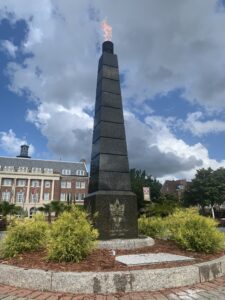
Florida A&M University and the other 11 institutions in the Florida State University System are one step closer to having an official plan for the upcoming academic year.
All 12 schools switched to remote learning in late March in an effort to limit the spread of the coronavirus pandemic. They have continued to teach only online courses during the summer.
The Board of Governors voted unanimously on Thursday to approve a blueprint for reopening SUS campuses this fall. Marshall Criser III, chancellor of the SUS,presented the “State University System of Florida Blueprint for Reopening Campuses.”
This document provides universities with guidelines for allowing campus life, resources and classes to resume with a modified structure that prioritizes the safety of its students, faculty and staff.
This document’s approval has been long anticipated by the governors and state task force members working to provide the universities with recommendations.
“Our primary focus is to make sure that our students as well as our teachers have a school that is ready for them and that their school is safe,” said Jairus Williams, Florida Education Association president and a senior resident assistantat FAMU.
As stated in the blueprint, universities are expected to establish a testing plan to decide who should be tested and how often, along with a screening system to identify those most in need of testing based on reports of travel to and from areas heavily affected by COVID-19. They were also advised to provide treatment for those coming from areas with “significant community transmission.”
Collaborations with health care workers and Florida Department of Health were listed as a way to establish a system that allows each institution to quickly respond to areas that are heavily impacted by the virus and determine contact tracing methods for individuals who test positive for COVID-19.
“One of the critical elements is not only identifying individuals who have become exposed or infected but also trying to understand what that group of individuals around them is,” Criser said.
The mass virtual schooling era may not be coming to an end as universities are expected to continue exploring different learning avenues and instructional delivery modes to allow every student academic flexibility. This is in addition to the existing hybrid, face to face and online teaching methods. Faculty training will also continue to ensure familiarity with new instructional methods.
Given the Centers for Disease Control and Prevention and state and local social distancing guidelines, universities are being urged to reevaluate course schedules, limits to outdoor and non-traditional spaces, in addition to a reexamination of class sizes and densities. Criser said that flexibility and personal responsibility would be key components in reopening campuses.
“The need for flexibility for all students, faculty and staff is ultimately going to be the foundation for the agility and resilience we need as we reopen our campuses,” Criser said during his online presentation.
The blueprint also describes plans to continually monitor campus health environments to allow campus leaders to expeditiously respond to spikes in infection and hospitalization rates alongside established circumstances that may result in an expansion of social distancing and behavioral restrictions. In order to accommodate victims of the virus, universities should develop isolation facilities for students who reside in on-campus housing and test positive for COVID-19 , as well as resources to provide care, counseling and aid in students ability to continue their studies.Campus health environments should be continually monitored to allow campus leaders to expeditiously respond to spikes in infection and hospitalization rates alongside established circumstances that may result in an expansion of social distancing and behavioral restrictions.
Each institution must turn in its specific plans by June 12 to Criser for reopening its campus. Trustees at FAMU signed off on a plan earlier this month that would continue online instruction for the majority to its students, but freshmen would have in-person classes.
The BOG will meet later in June at University of Central Florida in Orlando, its first in-person meeting in more than three months. Each university’s plan will be reviewed and discussed.